Mathematical Sciences Faculty
Mathematics Faculty
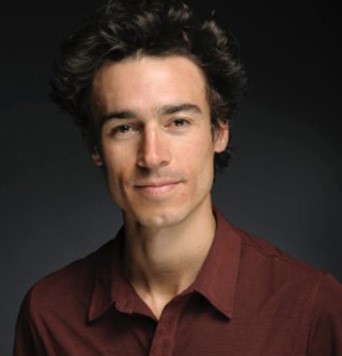
Dr. David Ayala
My work uses methods in algebraic topology to study manifold topology. Specifically, my work concentrates on how to obtain sensitive manifold, and embedding, invariants from purely algebraic, or higher categorical, input. Such manifold invariants are inspired by rigorous approaches to quantum physics, and abide by a nuanced local-to-global principle. My work develops factorization homology as the essential maneuver connecting higher categories and manifold topology. Through factorization homology, unforeseen dualities among manifold invariants, notably invariants arising as partition functions of quantum field theories (QFTs) thereon, correspond to deformations of higher categorical structures (Koszul duality). This duality often exchanges affine with non-affine input, thereby explaining and resolving certain divergence issues in QFT. Here is the essence of the idea. Fix a compact Riemannian manifold M. Fix a particle type on this manifold (which is to say a vector bundle over M, whose local sections are equipped with an action of its Lie algebra of infinitesimal isometries of M). Consider one such particle in M. Compactness of M grants a lowest-energy state of the particle. Self-interference of this particle results in some `resonance' for where one might find it in M. This resonance is governed by a complex number Z(M). This feature of lowest energy, grants that Z(M) is independent of the Riemannian metric. Therefore, Z(M) is an invariant of the manifold. Furthermore, one might imagine finding Z(M) by chopping M into chambers, and understanding the resonance of the particle in each chamber, compatibly across interfaces between these chambers. The effect is that one can, in principle, calculate Z(M) through a local-to-global principle. Formalizing, and organizing, this procedure is conveniently accommodated through higher category theory, and its relationship with stratifications. Poincare' duality intertwines with a duality among higher categories (Koszul duality), resulting in peculiar dualities among such manifold invariants.
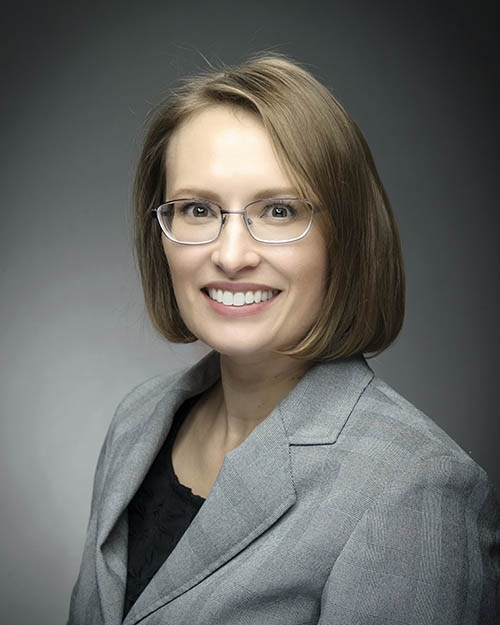
Dr. Breschine Cummins
Dr. Breschine (Bree) Cummins has broad interests in the field of mathematical and computational biology, and her current research interests include modeling the genetic control of cellular processes, modeling social processes related to disease spread, and most recently, exploring complex dynamics through the lens of artificial intelligence. When she’s not doing math, she’s dancing, sailing, or gardening.
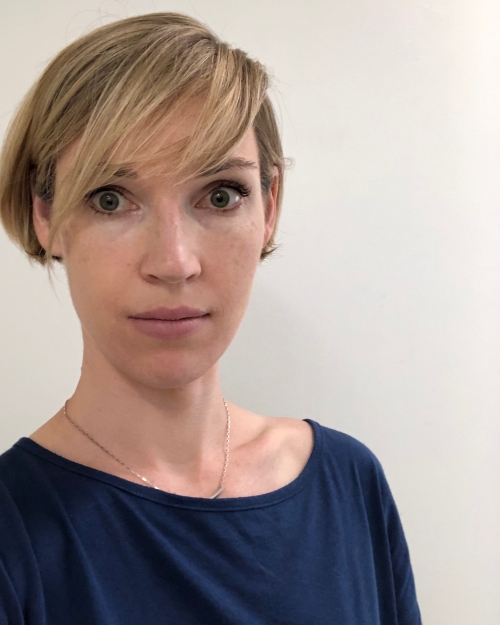
Dr. Blair Davey
Blair Davey’s research interests are in partial differential equations (PDEs), harmonic analysis and geometric measure theory (GMT). She studies the theory of elliptic PDEs through the perspectives of unique continuation, solvability of boundary value problems, and the connections to parabolic theory. Her work on unique continuation is motivated by Landis’ conjecture, which seeks to determine the optimal rate of decay at infinity of entire solutions to Schrodinger equations. She uses harmonic analysis techniques to understand when systems of generalized Schrodinger equations are uniquely solvable subject to certain boundary conditions. She relies on probabilistic tools to understand the non-trivial connections between elliptic and parabolic theory. She also works on GMT, studying purely unrectifiable (fractal) sets, generalized Favard lengths, the Besicovitch projection theorem, and various quantifications of these notions.
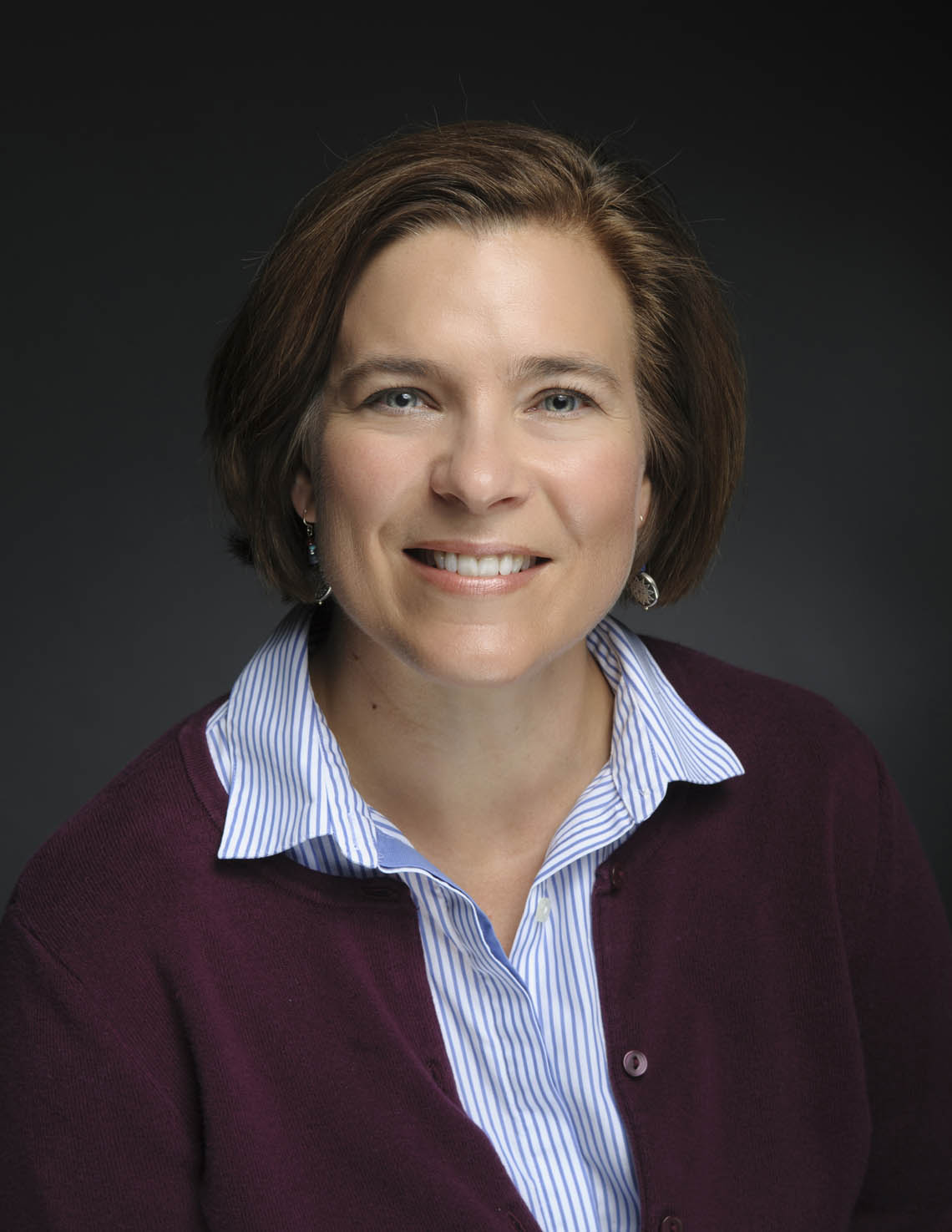
Dr. Lisa Davis
Dr. Davis’ research interests are in the areas of computational mathematics, sensitivity analysis and mathematical modeling of biological and ecological processes. She studies efficient and robust computational algorithms for solving problems in various areas of applied mathematics. She has a background in finite element methods as well as finite volume methods for various numerical simulation of systems governed by partial differential equations. Her research has received national funding from the NSF, DEPSCoR and AFOSR. Her most recent work is in the area of model construction and numerical simulation for bio-polymerization models. She has taught courses ranging from first year calculus to graduate level courses in numerical analysis and linear algebra. Lisa enjoys directing PhD students, and she is currently the Chair of the Graduate Program Committee. She is also active in advising and mentoring students involved in undergraduate research programs such as the Undergraduate Scholars Program and Montana INBRE. She is currently the PI on a grant focused on broadening the career pathways for doctoral students in Mathematics and Statistics through interdisciplinary research projects, internship opportunities and targeted course work and professional development called MT PEAKS.
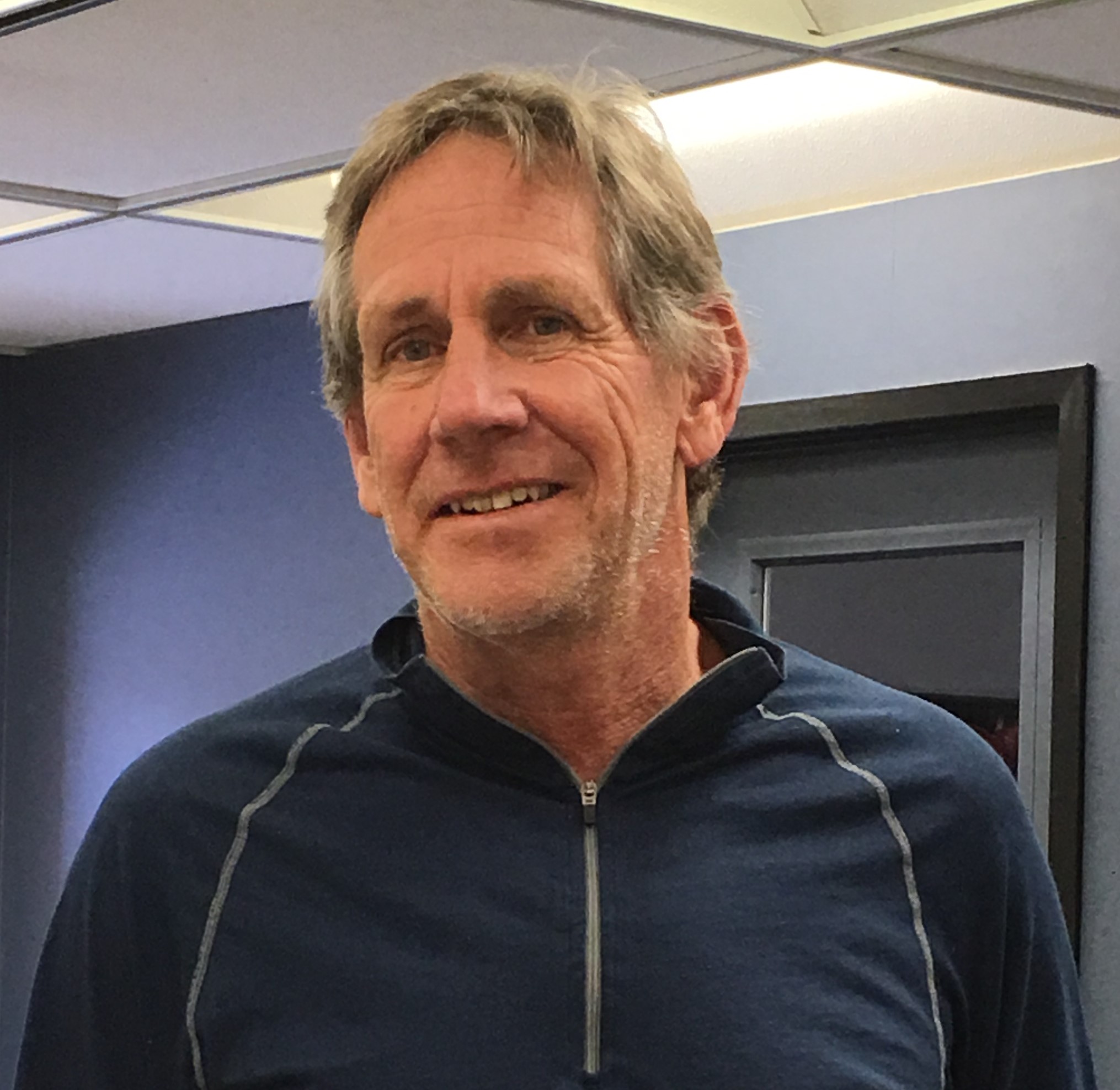
Dr. Jack Dockery
Dockery's research interest are in the area of mathematical modeling, analysis and numerical simulations of complex systems. He has written papers on traveling waves in the Belousov–Zhabotinsky reaction, biofilm modeling, population dynamics, chemical reaction systems, coupled systems of neurons, fluid dynamics, systems biology modeling of quorum sensing, traveling waves in coupled neuron systems, pattern formation in reaction diffusion systems and bifurcation analysis of Burgers equation. He has a current research project on quorum sensing using deterministic and stochastic modelling, funded through the National Science Foundation's collaborative research program with Martin Schuster, a microbiologist at Oregon State University
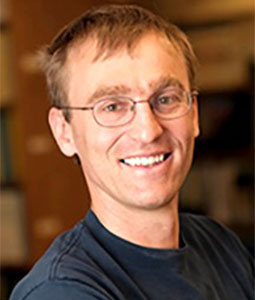
Dr. Tomas Gedeon
Tomas Gedeon is interested in mathematical biology, in particular cell biology, gene regulation, immunology and microbial communities. The main focus of his research is development of mathematical techniques that allow description of dynamics of gene regulatory networks. In collaboration with K. Mischaikow from Rutgers and S. Haase from Duke University, they developed an approach based on switching network models that allow combinatorization of phase space and parameter space, and allow finite characterization of dynamics in terms of Morse graphs. In collaboration with Dr. Carlson from Chemical and Biological Engineering (CHBE) Department at MSU he works on understanding metabolic exchanges that allow microbial consortia to outcompete monocultures in nature. In collaboration with Prof. Davis, he works on models of the transcription process in prokaryotes, where the main emphasis is on the understanding the constraints that this process imposes on speed of mRNA production, and ultimately, the growth rate of the bacteria. Finally, in collaboration with Prof. McCalla from Chemical and Biological Engineering Department at MSU they work on development of set of chemical reactions that could amplify micro RNAs, that indicate presence of a certain diseases like cancer, malaria, TB and traumatic brain injury. Several of his projects are currently funded by federal agencies like NSF, NIH and DARPA.
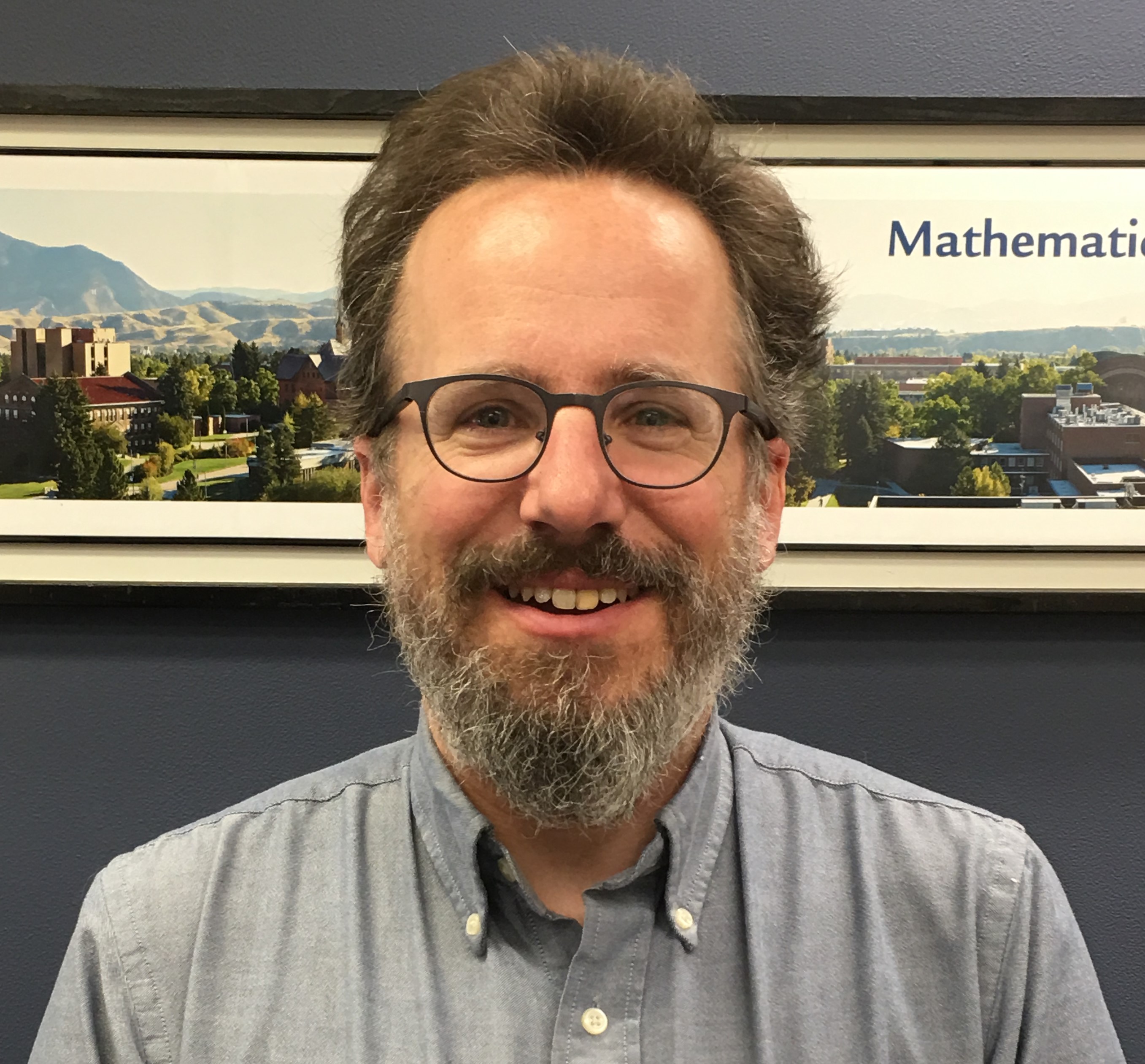
Dr. Lukas Geyer
Dr. Geyer’s research interests are in the area of complex analysis, complex dynamics, fractal geometry, and analysis on graphs. Complex dynamics is the study of iteration of analytic functions in the complex plane. It turns out that even very simple families of functions exhibit very complicated behavior such as fractal invariant Julia sets and very complicated bifurcation loci, most famously the boundary of the Mandelbrot set for a family of quadratic polynomials. His own work in this area has mostly centered around small divisor problems and stability of fixed points, periodic points, and invariant circles. Dr. Geyer’s work in fractal geometry has been mostly concerned with questions of conformal dimension of self-similar fractals, studied through analysis on finite graph approximations.
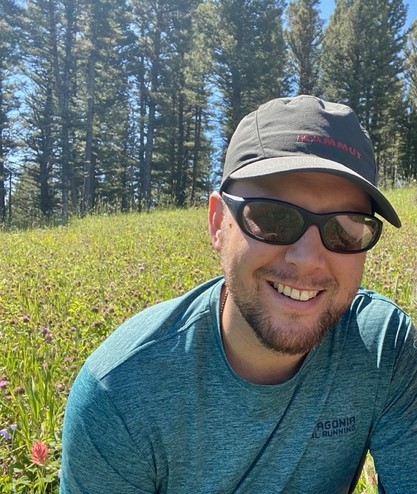
Dr. Ryan Grady
Dr. Grady's work is in the intersection of topology and mathematical quantum field theory. The central theme in his research is to codify the structure and symmetries of a physical system or data source. One possible realm of description is in terms of classical topology: spaces and manifolds; more elaborate descriptions can be given in terms of higher/derived geometry. Dr. Grady is also interested in the a converse question: how does physics help us probe geometric/topological objects? For instance, it is a well-developed research program within topology to ask how much about a given manifold can be recovered just from knowledge of how quantum particles 'resonate' within it. Dr. Grady enjoys the collaborative aspects of mathematical exploration and has collaborators across North America, Europe, and Asia. He frequently mentors students, at both the undergraduate and graduate level. In addition, Dr. Grady supervises the Directed Reading Program in Mathematical Sciences at MSU.
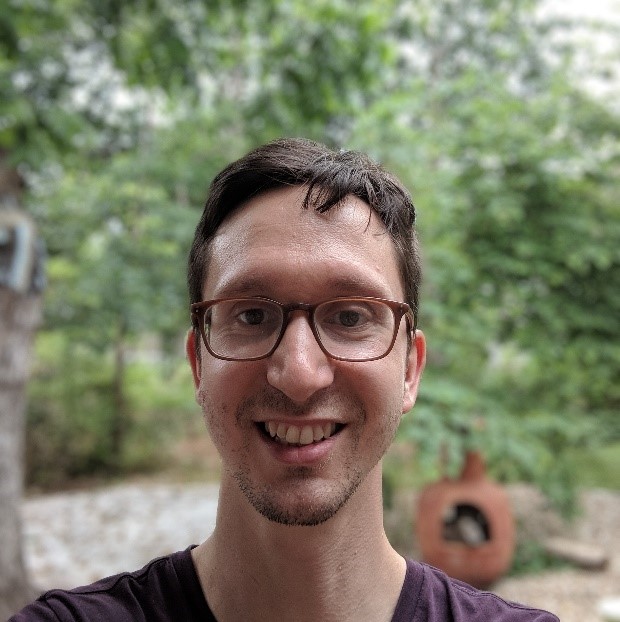
Dr. Sam Gunningham
Dr. Gunningham’s work is broadly in the field of Geometric Representation Theory. His research utilizes ideas and tools from all over geometry, topology, mathematical physics, and related areas. Many of the phenomona he is interested in can be understood through the lens of topological field theory (TFT). In physics, TFTs arise when you consider a quantum field theory such that there is no dependence of the spacetime metric (often this will require some ``twist'' or limit of the original theory). Mathematically, a TFT may be understood as a certain gadget that assigns numerical and linear algebraic data to manifolds (i.e. pieces of spacetime). Deep and mysterious dualities predicted by physics (in particular, by string theory) thus give rise to concrete mathematical predictions which can (hopefully!) be precisely formulated and proved. A rich example of this phenomenon is the (geometric) Langlands program. This program has its origins in number theory, in particular the theory of modular and automorphic forms; physically, it corresponds to so-called S-duality in 4d N=4 super Yang-Mills. The space of states of this theory on a 3-dimensional spacetime slice is closely related to the skein module: a vector space built out of all possible knots and links modulo certain ``skein relations''. One long-term research goal is to understand how Langland’s duality manifests itself in terms of knots and links in 3-manifolds.

Dr. Jarek Kwapisz
Dr. Kwapisz's intellectual home is in the area of Theoretical Dynamical Systems (DS), which studies qualitative behavior of systems that evolve in time according to some fixed transformation rule (e.g., resulting from a differential equations governing a real-life system). DS methods, developed originally for problems of celestial mechanics, now permeate mathematics and inform many other scientific applications. The connections are often startlingly productive and extend into seemingly unrelated areas, like number theory. In particular, one of Jarek's main research streams concerns aperiodic tilings of space that model quasicrystals. (Such tilings can be viewed as dynamical systems with multidimensional time.) He also has on-going projects in theory of formal languages, Anosov maps on manifolds, geometry of fractals, non-linear fiber optics, and quantum communication.
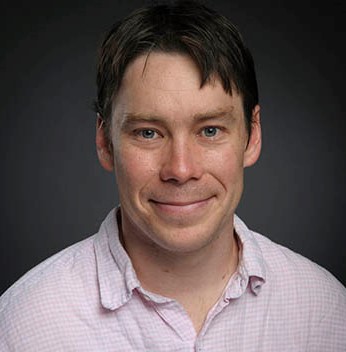
Dr. Scott McCalla
Dr. Scott McCalla applies data-driven modeling, computation, and analysis to understand pattern forming systems stemming from biological, geological, social, and physical systems. His approach is centered in dynamical systems techniques to understand solutions to pattern forming partial differential equations and their instabilities. His work is interdisciplinary and strives to understand varied experiments performed in the Center for Biofilm Engineering on a diverse range of issues such as bacterial ecology and the utility of washing chicken.
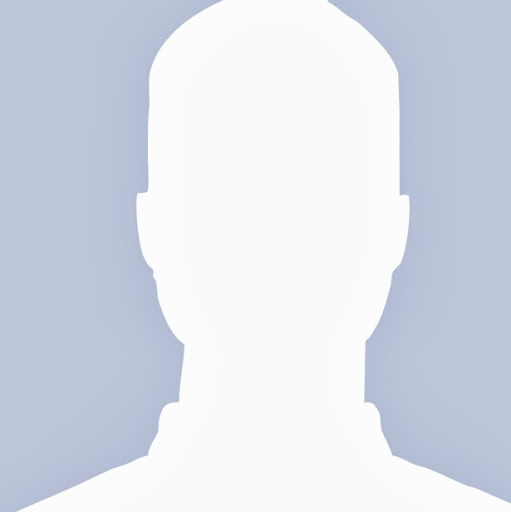
Dr. Allechar Serrano López
Allechar Serrano López research interests are number theory and arithmetic geometry; in particular, she works in arithmetic statistics and is interested in number field asymptotics. Allechar's service work centers around supporting communities that have been historically and systemically excluded in STEM by creating and supporting programs. Before coming to MSU, Allechar was a preceptor in mathematics at Harvard University. She obtained her Ph.D. at the University of Utah, supervised by Stefan Patrikis. Allechar used to be an economist and worked for the Central Bank of Costa Rica. She organizes a workshop called Rethinking Number Theory and is a co-founder of the Association for Women+ in Mathematics at Universidad de Costa Rica. Outside of math, Allechar enjoys baking, making ice cream, thrifting, watching YouTube videos about fashion history, and reading.
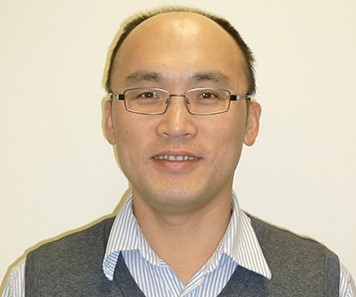
Dr. Tianyu Zhang
Dr. Zhang’s research interest includes numerical analysis, modeling and simulation of biofilm-related phenomenon, computational fluid dynamics, and data analysis. His current research projects include mathematical modeling of metabolic activity in chronic polymicrobial communities, role of dynamic microbiome in Cystic Fibrosis lung disease, constraint-based approach to model metabolic pathway selection in a multi-species syntrophic network, modeling and time series analysis of data collected in the waste water treatment plants using activated sludge, and modeling the bio-electrochemical denitrification process in wastewater treatment. His current project in modeling the dynamic microbiome contribution to Cystic Fibrosis lung disease, in collaboration with a microbiologist Robert Quinn at Michigan State University, is funded by an NIH-R01 grant. His teaching interest includes courses related to numerical solution of differential equations (finite difference and finite element methods).
Statistics Faculty
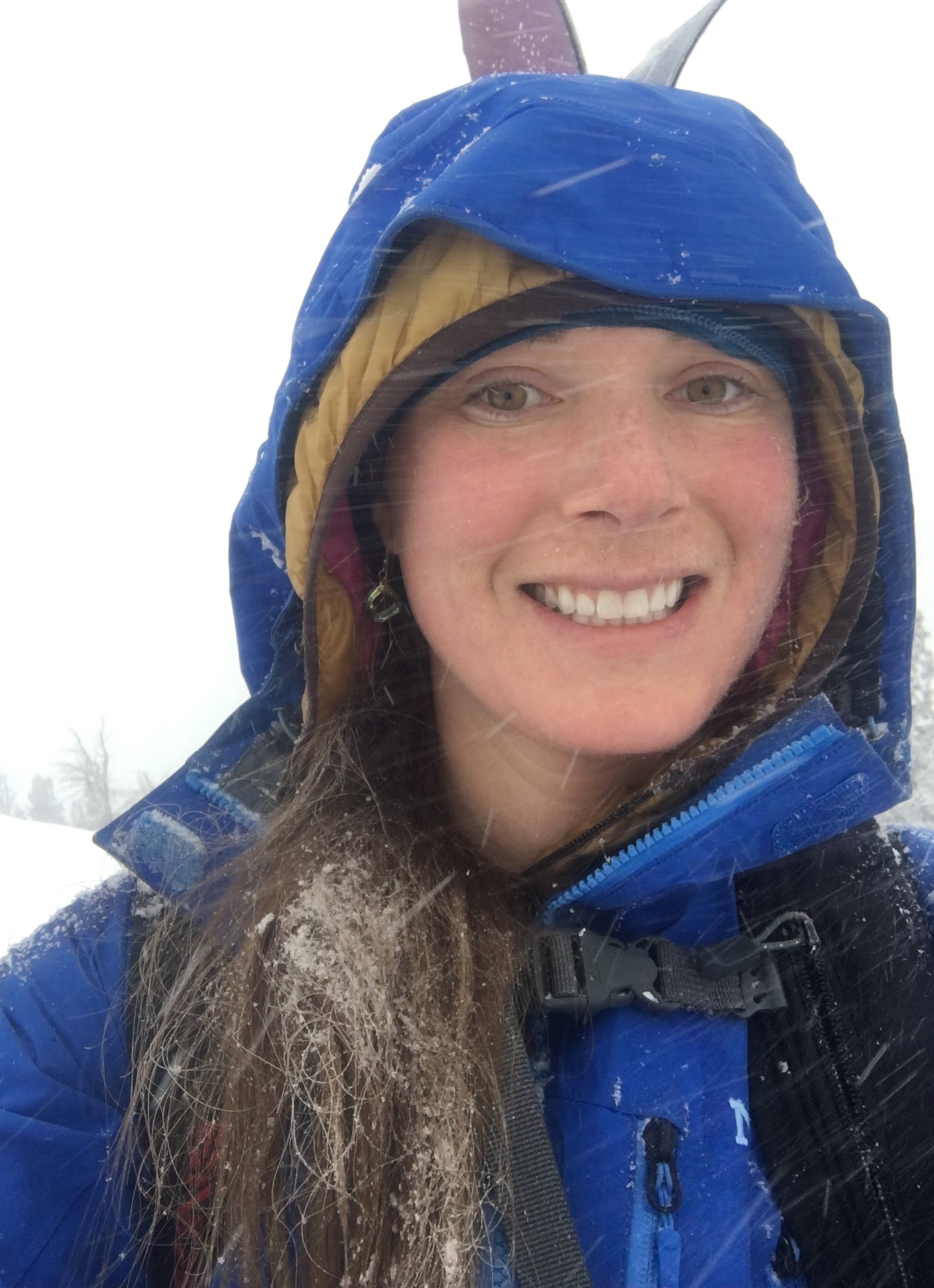
Dr. Katharine Banner
Dr. Katharine Banner enjoys working on applied problems that present an opportunity to develop or extend statistical methodology to address research questions in ecology and other sciences, and she is particularly interested in Bayesian methods. She has collaborated with research statisticians, ecologists and bat biologists to develop statistical methodology and visualization tools to help inform the conservation and management decisions of bat populations in North America; with ecologists and engineers who work on designing fish passages for species of concern in MT rivers; and with mathematics educators to develop statistical modeling units for youth that draw upon the youth’s community-based problem-solving skills. In all of her work, she firmly believes that when new statistical methods are developed it is the statistician’s responsibility to provide tools and practical guidelines (e.g., R packages and data/result visualization tools) so that methods are not used outside of their intended context. She has contributed to the multi-model inference literature to provide such tools for certain applications of model averaging in ecology, and is interested in continuing this work.
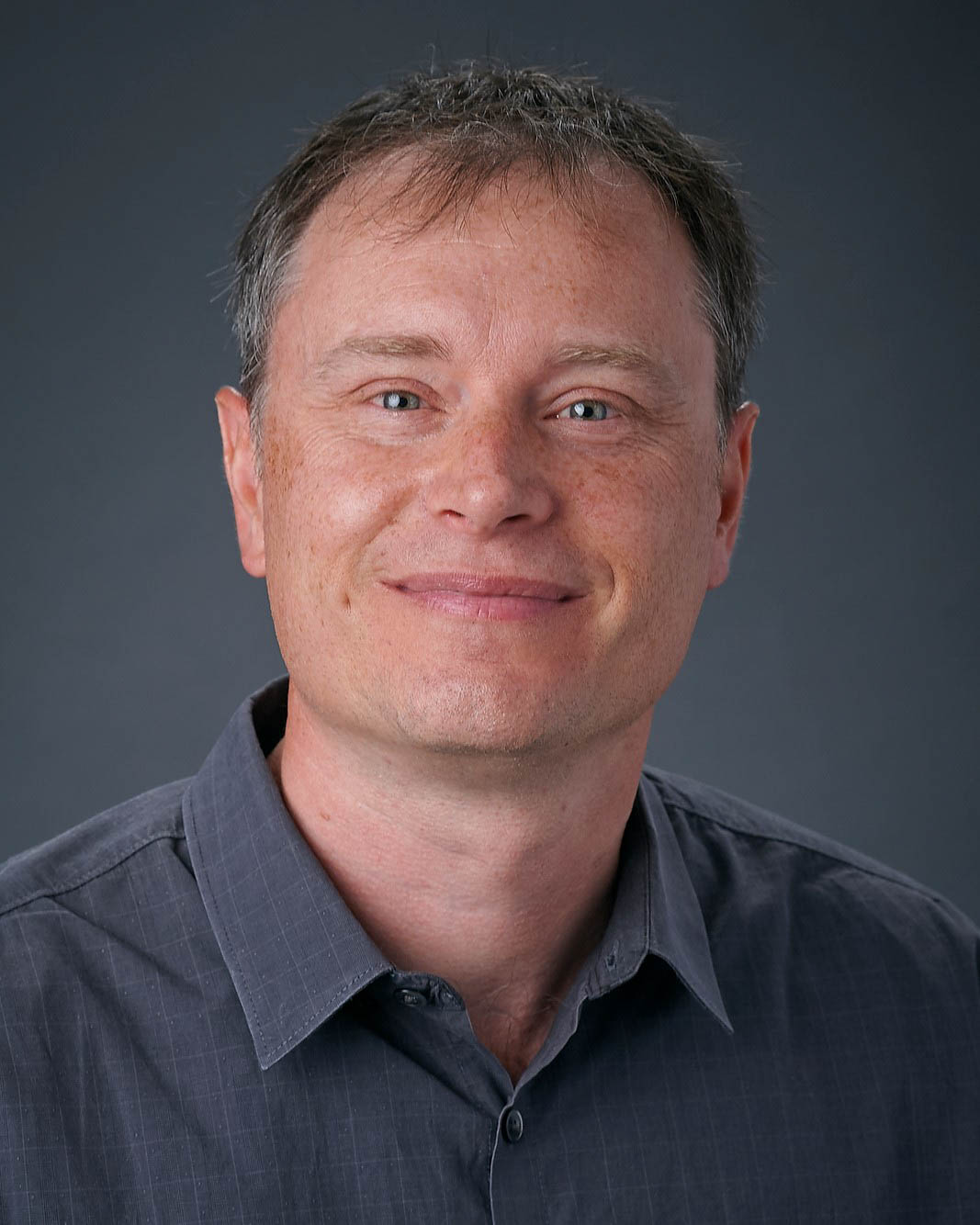
Dr. Mark Greenwood
Dr. Greenwood is a Professor of Statistics who does research on statistical methods for high dimensional and correlated data. This includes supervised and unsupervised classification and high-dimensional testing problems such as those encountered when working with functional data (data that are recorded or can be treated as curves) and in proteomics and metabolomics. Additional interests include hierarchical and generalized additive models and methods for incorporating measurement error into statistical models. Application areas include health outcomes related to Multiple Sclerosis, knee osteoarthritis, and long-term body mass index changes, longitudinal environmental data related to hydrology and climate change, and multi-level educational data.

Dr. Stacey Hancock
Dr. Hancock’s research interests lie in statistics and data science education. Research projects in this area include: how students use metaphors and metonymies when learning statistical concepts related to sampling distributions and informal statistical inference, how learning and attitudes towards statistics are affected by one's peers in a flipped-format classroom, and developing and defining data science curricula at the undergraduate and graduate level. She is also involved in an NSF grant to bring computer science to rural and American Indian middle school students in Montana through storytelling. Additional research areas include time series analysis, specifically, change-point detection, and statistical applications in ecology.
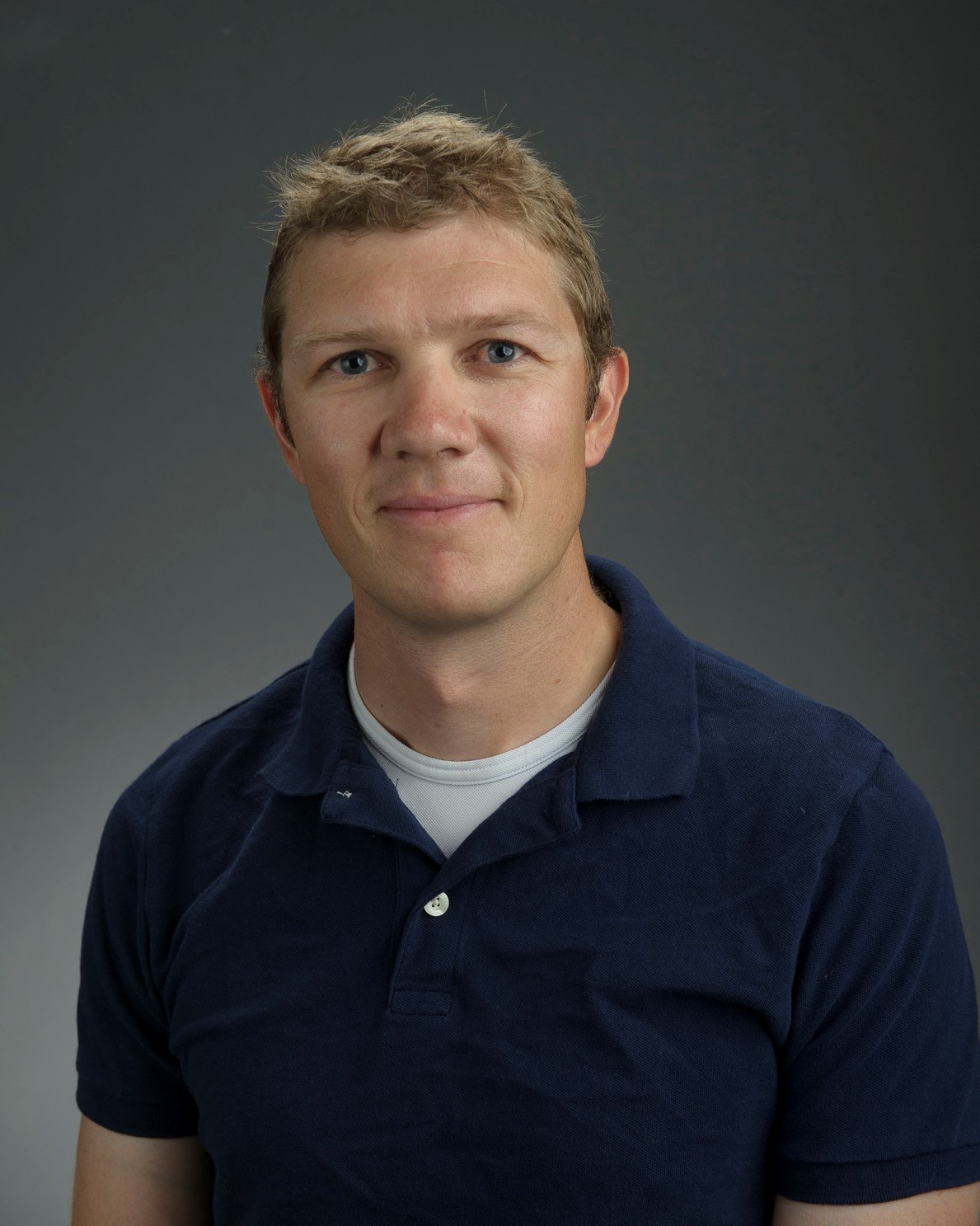
Dr. Andrew Hoegh
Dr. Hoegh’s research is largely focused on Bayesian computation with an emphasis on multivariate, spatial, temporal, and spatiotemporal modeling. Within that realm, Dr. Hoegh works on collaborative projects related to environmental and ecological research and occasionally sports analytics. Some current projects include: modeling grizzly bear movement in the Greater Yellowstone Ecosystem, understanding species composition in Grand Teton National Park, bio-surveillance for aquatic invasive species in the Northern Rocky Mountains, modeling the spillover of Henipavirus in bats, and understanding the spatiotemporal dynamics of coronavirus infection in bats. Dr. Hoegh, along with Dr. Banner and Dr. Kathi Irvine, co-organizes a vibrant research group in environmental and ecological statistics (https://bozemanenvrstat.github.io).
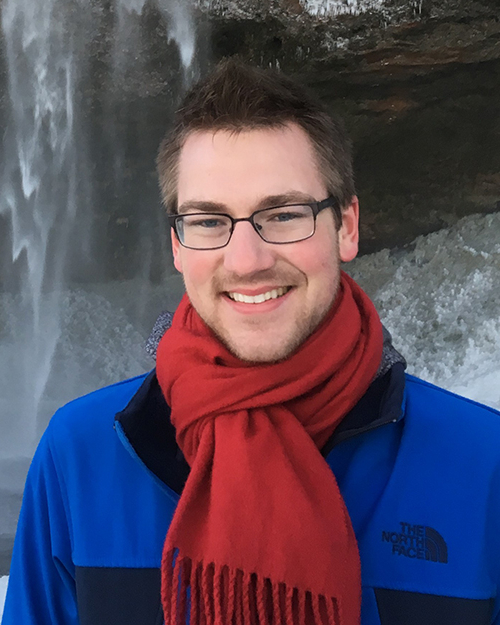
Dr. Ian Laga
Ian Laga is primarily interested in Bayesian modeling and generalized linear models, and specifically applications related to HIV and hard-to-reach, or key, populations like sex workers and drug users. These populations have increased risk of HIV and other infectious diseases, and governments and organizations like UNAIDS need accurate population size estimates for these key populations to implement prevention and treatment services. The statistical methods used to estimate population sizes are quite diverse, so his research involves small area estimation and geospatial methods, with a current emphasis on the Network Scale-up Method. He is currently involved in collaborative research projects to improve the Network Scale-up Method and estimate the size of various key populations across large areas, like sub-Saharan Africa. He is also broadly interested in anything related to Bayesian computing.

Dr. Shinjini Nandi
Shinjini Nandi is primarily interested indevelopment of new statistical theory and methodology in the realm of multiplecomparisons. Multiple comparisonsisa highly active research area in the broad domain ofhigh dimensionalstatistical inference. Her current research focuses ondevelopment of new methods of multiple comparisons to test complex structuresof hypotheses, thatare frequently obtained froma wide variety ofscientific studies including but not limited togenomics,brain-imaging studies, astronomical data, etc.The objective of developing the new methods is to identify signals in high-dimensional datasets with greater precision than existing methods, typicalmetrics of precisionbeingcontrol on false discoveries and powerin identifying the true signals. Shinjini is interested in developing such new multiple comparisonsmethods using both frequentist and Bayesian techniques. Her other interests lie in collaborativeresearchprojects that apply statistical methods to analyzeenvironmental and ecologicaldata, andhealthcare data. She is currently involved incollaborativeprojects investigating therisk of developing cardiovascular diseases in diabetic patients,andanalysis ofprevalence ofcolorectal cancer and effectiveness of its screening procedures on the US population.
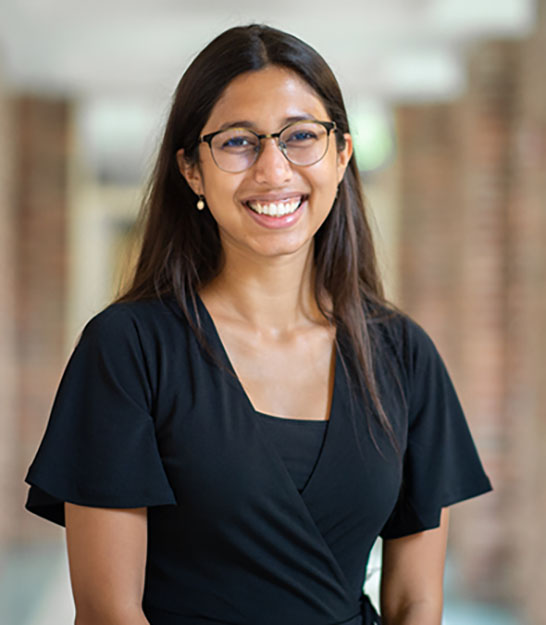
Dr. Samidha Shetty
Dr. Samidha Shetty’s main research interest is semi-parametric methodology for missing data. More broadly, she applies semi-parametric methods to different statistical domains. She is also extremely passionate about collaborative applied and methodological research in diverse scientific areas. Some recent collaborations explored the impacts of restless leg syndrome and genetics on fetal growth and the relationship between sleep patterns and head impacts in football players. Apart from statistics, she also enjoys reading, cooking and dancing.

Dr. John Smith
John Smith’s research is focused largely on Bayesian application driven methodology, with a particular interest in modeling, forecasting, and simulation of complex dynamical systems in ecology. Current collaborative research projects in that area include integrating data from the National Ecosystem Observatory Network (NEON) with process-based models for carbon budgets in a Bayesian state space framework, and fitting hierarchical thermal performance curves to estimate traits of common disease vectors (e.g. mosquitoes). Additional research interests include surrogate models for ecological applications, sports forecasting, and adoption of best practices for iterative near-term ecological forecasts.
Mathematics Education Faculty
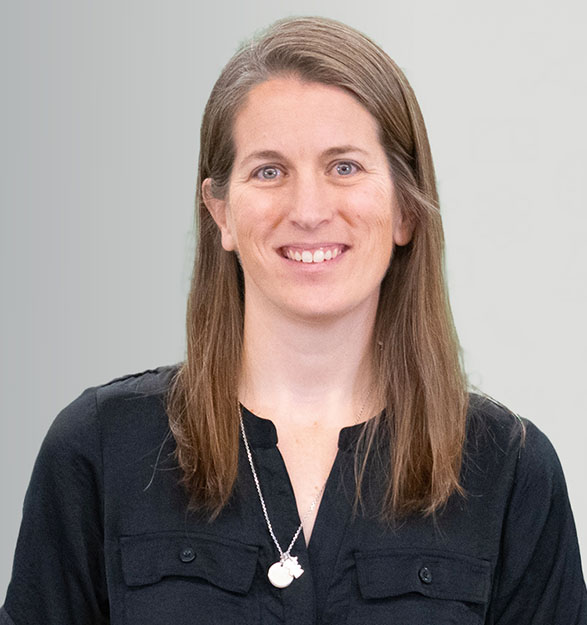
Dr. Elizabeth Arnold
Dr. Arnold's research centers on the mathematical preparation and development of pre-service and in-service K–12 mathematics teachers, with a focus on mathematical knowledge for teaching secondary mathematics, mathematical modeling, and teaching and learning statistics. Throughout her career, she has taught undergraduate mathematics content courses whose population consists of general mathematics majors and pre-service teachers, content courses specifically designed for pre-service teachers, and methods of teaching courses. She is an editor of the MAA Notes volume An Aspirational Approach to the Mathematical Preparation of Teachers (2024) and a co-author of Becoming a Teacher of Mathematical Modeling, Grades K–5, and Becoming a Teacher of Mathematical Modeling, Grades 6–12, both published in 2021 by NCTM.
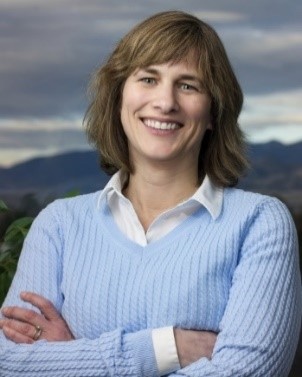
Dr. Elizabeth Burroughs
Dr. Burroughs’s research interests involve the teaching of mathematical modeling; the connections between the mathematics pre-service teachers study as undergraduates and the mathematics they will teach to school students; mathematics coaching in elementary mathematics classrooms; and gender issues in mathematics education. She is currently leading a grant-funded project to develop materials that incorporate applications of teaching in undergraduate mathematics courses. She also works with Dr. Carlson on a research study concerning the teaching of mathematical modeling in community settings.
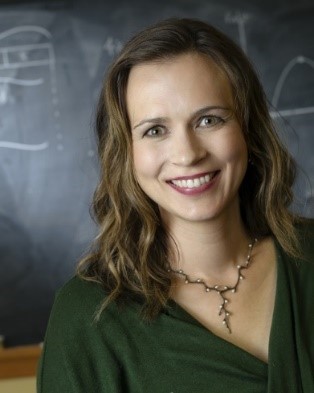
Dr. Mary Alice Carlson
Dr. Carlson’s research revolves around teacher learning and teacher change in mathematics; innovative formats for teacher professional development; and mathematical modeling. Her current work involves understanding the knowledge bases all youth bring to problem solving situations and using those knowledge bases to develop modeling tasks centered on issues that directly affect rural communities. She teaches mathematics content and methods courses for elementary and middle grades students, as well as a variety of mathematics education graduate courses.
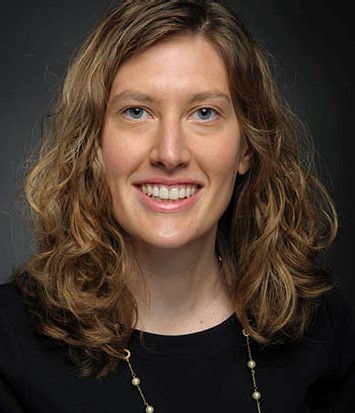
Dr. Megan Wickstrom
Dr. Wickstrom’s work is situated in the domains of mathematical modeling and geometric measurement and is primarily qualitative. Her recent work focuses on developing modeling tasks for pre-service and in-service teachers and exploring how teachers develop as modelers with respect to their mathematical knowledge, sense of agency, and engagement. She also explores ways in which mathematics teacher educators can support teachers in enacting modeling tasks and how teachers translate their knowledge, as learners, into practice. Through the tasks she develops, Megan strives to create spaces in which students feel a sense of community, are empowered as learners, and experience mathematics in creative and purposeful ways. She has been published in a variety of top-tier journals including: Journal for Research in Mathematics Education; The Journal of Mathematical Behavior, and Journal for Mathematics Teacher Education. She has won national awards for her work including the 2023 AMTE Early Career Award and the 2017 NCTM Linking Research to Practice Award. Her teaching interests include mathematics education content and pedagogy courses for K-12 teachers.
